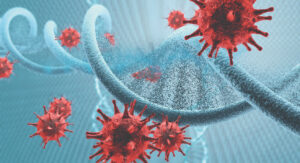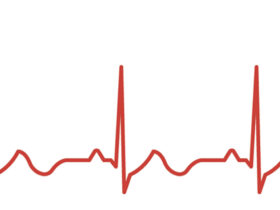By Dr. Melissa (Mel) Irvine, DNP – Clinical Sexologist – Specializes in Sexual Medicine and Beauty
 COVID-19 undoubtedly changed the medical landscape as we knew it, with the repercussions of the global pandemic continuing to be felt even years later, and in more ways than just a viral infection.
COVID-19 undoubtedly changed the medical landscape as we knew it, with the repercussions of the global pandemic continuing to be felt even years later, and in more ways than just a viral infection.
The cancer community, in particular, is feeling the effects of the pandemic with an uptick in cancer cases, especially those that are rare and aggressive, since the onset of the pandemic. With the pandemic delaying patients from seeking healthcare services and the virus potentially altering our biology, this begs the question: are these two events—the COVID-19 pandemic and increasing cancer rates—connected?
Investigating Increasing Cancer Rates in Relation to COVID-19
Research into cancer rates before the COVID-19 pandemic, during its height, and in the years following has revealed an interesting trend—the COVID-19 pandemic led to an increase in cancer rates, both during the height of its activity and as a residual effect still seen now. There are two possible causes of these observances: fewer cancer diagnoses due to a halt in screening and biological changes due to SARS-CoV-2.
As expected, the initial effect comes from a significant decline in cancer diagnoses in the pandemic’s early stages, specifically in cancers that are typically screened for. This is because of the cease of medical services that were deemed non-essential when society’s sole focus was halting COVID-19’s spread.
However, COVID-19 also produces a dramatic, and sometimes lingering, effect on the body—one that may awaken cancer cells or make them more likely to appear.
Collected below are three possible explanations for the rising cases of cancer in correlation with the appearance of COVID-19.
A Decline in Cancer Diagnoses
When it comes to cancer, the key to higher odds of survival is early detection. This is what makes the screening process crucial, as it can detect cancer in its early stages before it otherwise has any discernable symptoms. However, in the initial stages of the pandemic, when everyone was encouraged to remain at home, and only the most pressing medical emergencies were deemed necessary for a doctor’s visit, screening processes halted. As a result, fewer people received a cancer diagnosis during this time.
While the number of cancer diagnoses dipped, it’s not because there were fewer cancer cases.
In one study, the researchers used pre-pandemic data (collected between January 2018 and February 2020) to predict cancer incidences for the first ten months of the pandemic, from March 1st, 2020 until December 31st. They then compared these predictions to actual cancer incidence rates, finding a 29% lower incidence rate than projected during the peak of the SARS-CoV-2 response (March-May) and a 6.3% lower incidence rate between June–December. Overall, there was a 13% lower incidence rate for the first ten months of the pandemic.
To give perspective to this number, this equates to around 134,395 malignancies that were likely undetected during that period.
The repercussions of this are numerous for both the patient’s health and the health system. Early interventions allow the health system to fight the cancer while it remains in its early stages, which leads to fewer services required and a greater chance of completely eradicating the cancer. The further the cancer progresses, the harder this becomes, and the greater the burden on healthcare professionals since more treatments are needed.
As a result of this decline in diagnoses, it’s possible that many patients’ cancer was not detected until it was too late to treat—if it was even detected at all.
Of the cancers that were most likely to be missed, prostate cancer topped the list, followed by breast cancers and lung cancers. Malignancies that can be screened for were predicted to have a 14% lower overall rate.
This delayed diagnosis is continuing to be felt. A study comparing the staging values at the time of diagnosis for the 22 months before and after COVID-19 found a 4.24% increase in the number of patients diagnosed and staged with clinical stage T2 breast cancer and a decrease of 2.21% of those diagnosed with pathological stage 2. Essentially, there are more people diagnosed with breast cancer in its later stages and fewer being diagnosed while the cancer is in its earlier stages.
These numbers are even more exaggerated for colorectal cancer, with a 2.80% decrease in those diagnosed at the earliest stage of disease, an 8.73% decline in those diagnosed at stage T1 (an early stage), yet a 12.67% increase in those diagnosed at clinical stage T4, which is the largest tumor stage.
A Rise in Rare and Aggressive Cancers
It’s not just the number of cancer cases, overall, that has increased since COVID-19 appeared; there have also been increasingly unusual patterns observed by experts. Namely, there has been a 20% to 30% increase in new patients, patients with several different cancers appearing at the same time, patients relapsing after years of remission, and siblings and couples developing cancer within months of each other.
Experts believe that these unusual cases may be caused by inflammation associated with COVID-19 since inflammation can trigger genetic changes that may increase someone’s likelihood of developing cancer. In this way, COVID-19 does not directly change cells to make them cancerous, but it may cause an inflammatory cascade that could exacerbate the growth of cancer cells in certain individuals. If this is true, it would make COVID-19 similar to other environmental stressors that increase cancer risks, such as alcohol, tobacco, or asbestos.
Yet another theory is that coronavirus disrupts the body’s ability to suppress tumors, hindering our natural immune response, or that the organs of those with COVID-19 are too heavily infected and cannot resist cancerous agents.
It’s not uncommon for a virus to receive the blame for the appearance or progression of cancer, with researchers estimating that up to 20% of all cancers worldwide originate from infectious agents such as Epstein-Barr, HPV, and hepatitis B. With this knowledge, it’s not unusual to have some suspicion toward the lasting effects of COVID-19, especially since much about its long-term effects and impact continues to remain unknown.
Ultimately, any connection between rising unusual cancer cases and COVID-19 remains only a subject of speculation for now since there are no studies confirming that COVID-19 produces a cancer-promoting inflammatory effect. Still, even without a confirmed connection, these theories offer a new focus for doctors—with inflammation already having a reputation for harm and disruption, being aware of another possible cause behind its appearance can allow them to better care for their patients.
Reawakening Cancer Cells
While still under investigation, COVID-19 may send cancer survivors into remission, even years after they have received the highly sought-after “all clear.”
This theory comes from research on the effect of COVID-19 on mice with dormant cancer cells. When infected with SARS-CoV-2, these mice that were cancer survivors saw dormant cancer cells that proliferated in the lungs. Additionally, when analyzing human observational data, the researchers found that cancer survivors who contract COVID-19 have a higher risk of lung metastatic progression and cancer-related death.
It’s not just COVID-19 that produces this effect, either; similar results were seen with the flu virus.
As for theories on why these results were observed, it has to do with the immune system’s role in activating cells from dormancy. When you’re infected with a virus such as COVID-19 or the flu, it triggers inflammation that may then change the immune microenvironments, causing these changes in dormant cancer cells.
Responding to Increasing Cancer Rates
Given our current scientific understanding of COVID-19, one of the most likely reasons behind these rising cancer rates, specifically the rise in late-stage cancer diagnoses, is a lack of screening and healthcare appointments. While it started in the early stages of the pandemic when the general public was encouraged to stay home, and practitioners only saw patients for medical emergencies, this decline in screening has continued even years after the pandemic’s initial stages.
This requires an alteration to the cancer care landscape and a re-emphasis on the importance of early detection.
Screening remains the most important tool for detecting many cancers while in their early stages, and doctors should continue to emphasize its importance. Some screenings, such as those for colorectal cancer, even have at-home options that can be suitable for patients who meet certain criteria, increasing the ease with which they can complete their screening—the more seamless the screening process is, the more likely patients are to complete it.
However, there is also the potential link of COVID-19 exacerbating conditions that promote cancer cells. While research is still needed, doctors can use these initial theories to place a greater emphasis on inflammation prompted by COVID-19, especially for those suffering from long-COVID or those who are cancer survivors. Monitoring for inflammation and finding ways to lower it may maintain an internal environment that can better protect against cancer.
Ultimately, while the COVID-19 pandemic has changed the healthcare landscape as we know it, doctors, in their endless pursuit of greater knowledge, can change along with it and continue to adapt their care to meet their patients’ needs.
9250 Corkscrew Rd., Suite 15, Estero, FL 33928
239-351-5663
info@sextys.com | drmelirvine.com
References
Burus, T., Lei, F., Huang, B., W. Jay Christian, Hull, P. C., Ellis, A. R., Svetla Slavova, Tucker, T. C., & Lang, K. A. (2024). Undiagnosed Cancer Cases in the US During the First 10 Months of the COVID-19 Pandemic. JAMA Oncology, 10(4), 500–500.
https://doi.org/10.1001/jamaoncol.2023.6969
Zinner, M. (2024). Evaluating the Link Between COVID-19 and Cancer Progression in 2023. Targeted Oncology, 13, 40–40.
https://www.targetedonc.com/view/evaluating-the-link-between-covid-19-and-cancer-progression-in-2023
Could COVID-19 be behind the rise in rare and aggressive cancers? (2024). Advisory. https://www.advisory.com/daily-briefing/2024/06/12/covid-cancer
Jahankhani, K., Ahangari, F., Adcock, I. M., & Mortaz, E. (2023). Possible cancer-causing capacity of COVID-19: Is SARS-CoV-2 an oncogenic agent?. Biochimie, 213, 130–138.
https://doi.org/10.1016/j.biochi.2023.05.014
Chia, S. B., Johnson, B. J., Hu, J., Vermeulen, R., Chadeau-Hyam, M., Guntoro, F., Montgomery, H., Boorgula, M. P., Sreekanth, V., Goodspeed, A., Davenport, B., Pereira, F. V., Zaberezhnyy, V., Schleicher, W. E., Gao, D., Cadar, A. N., Papanicolaou, M., Beheshti, A., Baylin, S. B., Costello, J., … DeGregori, J. (2024). Respiratory viral infection promotes the awakening and outgrowth of dormant metastatic breast cancer cells in lungs. Research square, rs.3.rs-4210090. https://doi.org/10.21203/rs.3.rs-4210090/v1
Shanmugam, R., Fulton, L., Kruse, C. S., Beauvais, B., Betancourt, J., Pacheco, G., Pradhan, R., Sen, K., Ramamonjiarivelo, Z., & Sharma, A. (2024). The effect of COVID-19 on cancer incidences in the U.S. Heliyon, 10(7), e28804. https://doi.org/10.1016/
j.heliyon.2024.e28804
Morales-Sánchez, A., & Fuentes-Pananá, E. M. (2014). Human viruses and cancer. Viruses, 6(10), 4047–4079.
https://doi.org/10.3390/v6104047 al Of Men’s Health, 33(3), 125. doi: 10.5534/wjmh.2015.33.3.125







